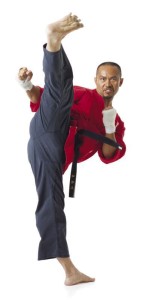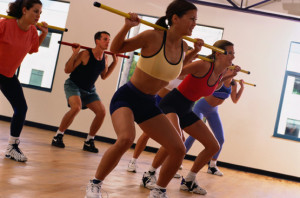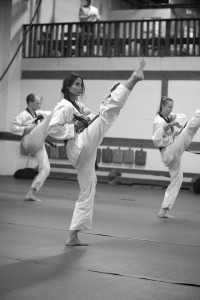Frequently Asked Questions about Adult Martial Arts Training at the Dragon Gym in Exton, PA
Do I need any prior experience?
Nope! Our muay thai program is completely progressive – meaning we teach you exactly everything need to know in order to safely and effectively train in traditional martial arts like Tae Kwon Do and Hapkido. We take great pride in being a “principle first” based system. This means that our program is based first on safety and helping you develop proper understanding of martial arts principles. Many people who take our our classes never done martial arts before, but quickly fall in love with it.
Do I need to be in REALLY GOOD SHAPE to start Martial Arts?
Not at all. When you join Dragon Gym Martial Arts (Moo Do), you become part of something much greater than just a workout program. You become part of an incredibly supportive and encouraging community. We’ve literally helps hundreds of people of all shapes and sizes get in the best shapes of their lives AND learn martial arts. Our system is progressive and will work for ANYONE who commits to it. You will never be expected to do more than what you are currently capable of, and unlike most other martial arts classes you will never feel embarrassed or left behind.
Do I need to bring my own gear and equipment?
When you get started in our Quick Start Program, we’ll give you a Uniform (dobalk). That’s all you need to get started. At the Dragon Gym we have a full compliment of equipment: Focus Pads, Heavy Bags, Targets, Mats, jump ropes, etc… As you continue training you may want to invest in some personal gear like shin pads and head gear.
Can I bring a friend?
Absolutely! Actually, we found that beginners that start with a friend tend to get better results, learn more, and have more fun!
How Many Women Train in Martial Arts at Dragon Gym?
Actually, a lot! The classes at Dragon Gym have just about a 50-50 male to female student ratio. The way we teach martial arts is all about the use of technique and is perfectly suited for females – a demographic we specialize in teaching.
It seems like every one that trains Martial Arts is really young, am I too old?
No way! Our classes have a range of age groups. We teach teenagers all the way through students in their 70s. We can do this only because our program is technique and curriculum based, enabling us to tailor drills and workouts to your individual needs.
There’s a lot of talk about technique and progression, I just want to learn how to fight. Can I compete if I want to?
You sure can, but the focus of the Traditional Martial Arts program at Dragon Gym is not competition. We are more focused on teaching you how to protect yourself and getting you in the best shape possible. If you are interested in tournaments or competition in the ring we recommend our BJJ or Muay Thai programs.
Where is Dragon Gym Located?
The original Dragon Gym is located in Exton, PA. The address is 267 S. Whitford Rd, Exton PA. We are just minutes away from Downingtown, West Chester and Malvern, PA.
When are classes and how do I get more info?
We offer a variety of muay thai classes through the week. However, we start all new students with a free, no obligation orientation lesson with on of our Martial Arts Instructors. This will give you a chance to see what Martial Arts Training is all about and give us the chance to recommend the best program for you.







